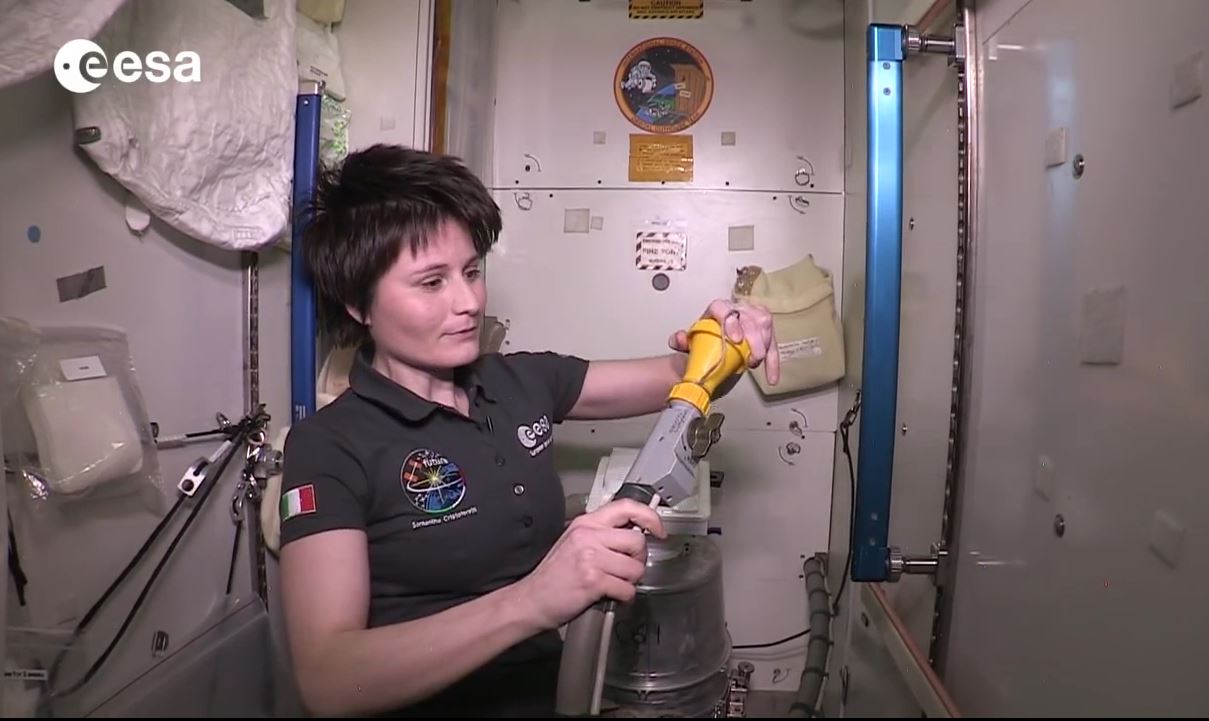Best Space Stories of the Week — May 17, 2015

Astronauts aboard the International Space Station will return later than expected, a Russian cargo craft may have failed due to a problem with the rocket that launched it into space, and a British pop singer changes her tune on a trip into orbit. Here are Space.com's top stories of the week.
Astronauts' return trip delayed
After the loss of the Russian cargo ship Progress 59, NASA and its international partners decided to delay the return trip of Terry Virts, Anton Shkaplerov and Samantha Cristoforetti until June. The three astronauts have been aboard the International Space Station since November. [Full Story: Space Station Crew's Earth Return Delayed by Russian Spaceship Crash]
Cause of Russian spacecraft crash uncovered
A too-early separation from the third stage of the Soyuz rocket may have caused the loss of the Russian space agency's Progress 59 spacecraft, which burned up in Earth's atmosphere May 7 after a failed attempt to deliver supplies to the International Space Station. [Full Story: Russian Space Cargo Ship Crash Blamed on Soyuz Rocket]
British singer cancels her trip to space
Pop singer Sarah Brightman was scheduled to make a self-funded trip to space this September aboard a Russian Soyuz spacecraft. But, on May 13, the singer announced the trip had been postponed "for personal family reasons." [Full Story: Singer Sarah Brightman Changes Her Tune on Space Mission]
Get the Space.com Newsletter
Breaking space news, the latest updates on rocket launches, skywatching events and more!
NASA funds 'squid rover' and other strange tech
The future of space exploration may lie in a tentacled, amphibious "squid rover" or one of 14 other new and ambitious technology concepts that the NASA Innovative Advanced Concepts (NIAC) program recently funded. [Full Story: NASA Funds 'Squid Rover,' 14 Other Far-Out Space Tech Ideas]
Tiny, cubic satellites will probe deep space
Cubesats, or tiny satellites built from blocks that are only 4 inches on each side, are collecting data from orbit around the Earth. Now they're being sent into deep space. [Full Story: Tiny Cubesats Set to Explore Deep Space]
Sorry, but there is no NASA warp drive
Despite recent Internet rumors that NASA researchers were on the verge of developing a propellant-free thruster system, the space agency has said that the actual work is still conceptual and "has not yet shown any tangible results." [Full Story: No Warp Drive Here: NASA Downplays 'Impossible' EM Drive Space Engine]
Mars One execs defend applicant process
The company that says it plans to build a human settlement on Mars by 2027 responded to accusations that its astronaut-selection process was based largely on the level of financial investment in the company by the applicants. [Full Story: Mars One Execs Dispute Criticism of Red Planet Colony Mission]
How astronauts 'go' in space
Italian astronaut Samantha Cristoforetti showed the world the potty aboard the International Space Station, in a new video. The suction fan is apparently so loud that everyone on board knows when it's being used. [Full Story: In Space, Everyone Can Hear You Poop | Video]
Should we stop cracking jokes about Uranus?
Science communicator and space enthusiast Ariel Waldman argues that silly jokes about the seventh planet from the sun can get in the way of people actually learning about this awesome place. [Full Story: Uranus Is a Cool Place, But Jokes Make It the 'Saddest Planet' (Video)]
Black holes plus dark matter make light
Researchers at the NASA Goddard Space Flight Center are looking for gamma- rays radiated by dark matter as it circles the drain of a black hole. Such a signal could shed light on the nature of this otherwise invisible material. [Full Story: Black Holes Might Make Dark Matter Shine]
Pluto probe looks for rings and new moons
NASA's New Horizon's probe is the first mission to study Pluto up close. As it draws nearer to the distant dwarf planet, New Horizons is looking for previously unseen moons or rings. [NASA Pluto Probe Begins Search for New Moons, Rings]
Are the seas salty on Europa?
Researchers think the beautiful reddish-brown lines that streak across the surface of Jupiter's moon Europa could be radiation-blasted salt from an underground sea. [Jupiter Moon Europa's Dark Lines May Be Salt from Underground Sea]
Follow Calla Cofield @callacofield.Follow us @Spacedotcom, Facebook and Google+. Original article on Space.com.
Join our Space Forums to keep talking space on the latest missions, night sky and more! And if you have a news tip, correction or comment, let us know at: community@space.com.

Calla Cofield joined Space.com's crew in October 2014. She enjoys writing about black holes, exploding stars, ripples in space-time, science in comic books, and all the mysteries of the cosmos. Prior to joining Space.com Calla worked as a freelance writer, with her work appearing in APS News, Symmetry magazine, Scientific American, Nature News, Physics World, and others. From 2010 to 2014 she was a producer for The Physics Central Podcast. Previously, Calla worked at the American Museum of Natural History in New York City (hands down the best office building ever) and SLAC National Accelerator Laboratory in California. Calla studied physics at the University of Massachusetts, Amherst and is originally from Sandy, Utah. In 2018, Calla left Space.com to join NASA's Jet Propulsion Laboratory media team where she oversees astronomy, physics, exoplanets and the Cold Atom Lab mission. She has been underground at three of the largest particle accelerators in the world and would really like to know what the heck dark matter is. Contact Calla via: E-Mail – Twitter









